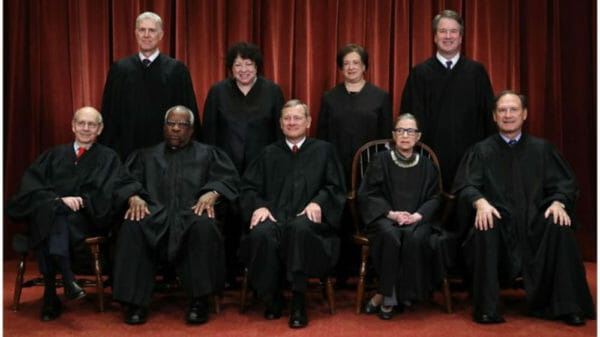
Fayetteville, AR – -(AmmoLand.com)- For the first time since 2010, the United States Supreme Court has agreed to hear a case about the constitutionality of a gun law, specifically New York City’s restrictions on where a person with a license for a firearm in one’s residence can take that gun outside. Under current rules, such owners may only go to shooting ranges within the city limits. Transportation to a range elsewhere or even to property in other parts of the state is illegal. According to a three-judge panel of the Second Circuit, this law complies with the Second Amendment as interpreted by the Heller decision.
The city argues that it’s too hard to determine whether someone with an unloaded firearm locked in one case and ammunition in a separate container is going to a local range or somewhere else. In my state of residence, this would never be a question, since we understand that transporting one’s personal property in a manner that is not overtly a threat to others is no one else’s business.
The idea of letting go is a horror to those who yearn for control.
Since Heller only addressed the specific question of ownership, jurisdictions like New York City feel free to make exercising the right to bear arms as difficult as possible for people who care about following the law. The standard claim of gun control advocates, though—the assertion that the measures they demand are for safety—falls apart here. This isn’t even a debate over concealed carry. The transportation of unloaded and locked firearms is just movement. If someone is going to travel to a location to commit a crime with a firearm, that person isn’t going to worry about restrictions, and there are many possible purposes for putting a gun in the trunk that have nothing to do with any intention to do wrong. And if the gun is being transported in a legal manner—again, unloaded and locked up with the ammunition in a separate container—it creates little opportunity for the sudden acts of irrationality in the midst of an argument that supporters of such laws imagine. “Please wait while I get my gun out of its case and load a magazine so I can then shoot you” would have made a good Monty Python sketch, but it doesn’t work so well in the real world.
And then there’s the consideration that operating a firearm is a skill that has to be practiced in context. Indoor ranges such as what are available within large cities provide an opportunity to try out several types of guns, if the range rents them, and lets a user develop the abilities to hold the gun correctly and to aim through the firing process. For people whose interest is solely in putting rounds into the ten ring—competition shooting, in other words—such ranges are exactly what is needed. But a gun can also be a weapon for stopping a violent attack, and working up the talent to use it in that way takes a space with more room to maneuver. But one of the real purposes of gun control is to make sure that the law-abiding never use firearms to protect themselves.
With the changes to the Supreme Court of late, we may get a good ruling out of this case. Heller and McDonald did the same, though they didn’t go far enough. What we can guardedly expect here is a recognition that the Second Amendment isn’t only for the home—in other words, “bear” is in the text, and we may finally see that part to be treated seriously.
About Greg Camp
Greg Camp has taught English composition and literature since 1998 and is the author of six books, including a western, The Willing Spirit, and Each One, Teach One, with Ranjit Singh on gun politics in America. His books can be found on Amazon. He tweets @gregcampnc.
